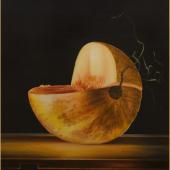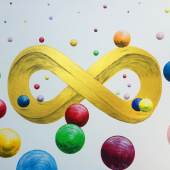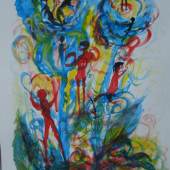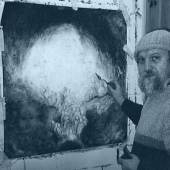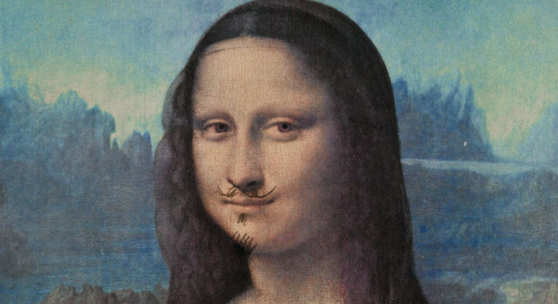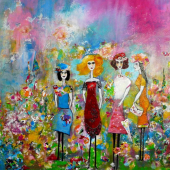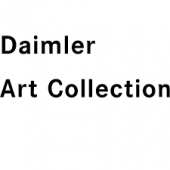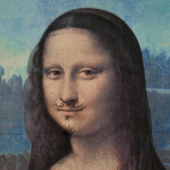Marcel Duchamp and the Fetish
-
Ausstellung13.10.2021 - 13.11.2021
Everything can be based on an erotic climate without too much trouble. I believe in eroticism a lot, because it’s truly a rather widespread thing throughout the world, a thing that everyone understands. It replaces, if you wish, what other literary schools called Symbolism, Romanticism [...] It’s the basis of everything, and no one talks about it. Eroticism was a theme, even an ‘ism’, which was the basis of everything I was doing. – Marcel Duchamp, 1967
The exhibition Please Touch: Marcel Duchamp and the Fetish, curated by Paul B. Franklin at Thaddaeus Ropac, London, is the first to explore the centrality of fetishism and the fetish in the artist’s practice. Although Duchamp himself acknowledged that eroticism was ‘Visible or conspicuous, or, at any rate, underlying [...] the basis of everything I was doing’, the role of fetishism in his work has been largely overlooked by scholars and curators. In fact, fetishism served Duchamp as a potent guiding principle as he traced his singular path in twentieth-century art. This sensual, erotic dimension is indivisible from his radical questioning of the very nature of the artwork and the role of the artist, which prompted painter Willem de Kooning to call him a ‘one-man movement’ in 1951.
Please Touch highlights the extent to which Duchamp playfully and provocatively exploited the slippages between the work of art and the fetish, thwarting our habitual compulsion to circumscribe the limits of either. The varied objects featured in Please Touch incite and even cajole us to fathom art as a wellspring of pleasures and possibilities, where the visual is forever enmeshed with the sensual, the tactile, the libidinal. – Paul B. Franklin
As Duchamp adopted eroticism as his creative credo, he also drew upon certain premises associated with fetishism. The idea of the fetish – whether devotional items imbued with mystical powers or objects, materials and body parts invested with erotic potential – informed psychoanalytical theory in the early twentieth century. Rather than the psychosexual ‘perversion’ identified by Sigmund Freud and Alfred Binet, however, fetishism became a fundamental aspect of Duchamp’s efforts to reorient the relationship between artist, artwork and viewer.
The exhibition’s title is borrowed from one of Duchamp’s most fetishistic works, Prière de toucher (Please Touch) (1947), a foam-rubber breast enveloped in black velvet that the artist created for the cover of the exhibition catalogue Le Surréalisme en 1947. This title mischievously invites visitors to contravene conventional museum etiquette and to participate in an intimate dialogue with the works on view.
The exhibition is organised around five interrelated themes: the readymade as fetish object; the fetishization of miniature replicas and mechanical reproductions as originals; fetishism and gender play; fetish materials such as leather, vinyl, foam rubber and metallic paper; and, finally, Duchamp’s fetishistic multiplication of his artistic identity, most notably in his drag persona Rose (later Rrose) Sélavy.
Readymade as Fetish Object
Beginning in the 1910s, Duchamp began appropriating mundane, factory-made objects that he elevated to the position of artworks simply by selecting and displaying them as such. These ‘readymades’ represented an attempt to eliminate from the creative process both the artist’s hand and the predominance of aesthetics. As he stated in 1963, ‘A Ready-made is a work of art without an artist to make it’. Duchamp’s first pure, unmodified readymade was a galvanised-iron bottle rack that he purchased from a Paris department store in 1914. A functional item invested with the ‘aura’ of an artwork, Porte-bouteilles (Bottle Rack) has the tenor of a fetish object: its spiked form and quasi-mystical dynamic recall African ‘nail fetishes’, while its undeniably sexual connotations embody the eroticism central to Duchamp’s practice.
Reproduction as Fetish, Fetishizing Reproduction
For Duchamp, the ideas embodied in a work of art were of greater importance than the physical work itself, much as the personal significance of a fetish object is disproportionate to its use value. As he declared, ‘A duplicate or a mechanical repetition has the same value as the original’. Beginning in the 1930s, it was not uncommon for the artist to create or authorise replicas of lost readymades for exhibitions, such as the Bottle Rack on view, which is a 1964 replica of the lost 1914 original.
He also devised a self-curated retrospective titled De ou par Marcel Duchamp ou Rrose Sélavy (Boîte-en-Valise) (From or by Marcel Duchamp or Rrose Sélavy [Box in a Valise]), which he conceived between 1935 and 1941 and subsequently issued in various editions. After fetishistically producing miniature replicas and reproductions of his works, he assembled them in transportable cardboard containers. Rather than using contemporary reproduction methods, Duchamp painstakingly created antiquated collotype prints that were coloured by hand and sometimes varnished or framed in faux wood-grain cardboard. As Franklin writes, ‘Obfuscating the boundaries between original and copy, he undercut the autonomy and sanctity of the art object [...] demonstrating that its display and duplication were works of art in their own right.’
-
29.01.2021 - 01.02.2021Das Sammeln wertvoller Bücher und Graphik – trotz und gerade in Pandemie-ZeitenNachdem der...
-
14.04.2023 - 16.04.2023Seit 2016 ist die ARTe die Kunstmesse für Gegenwartskunst in der Metropolregion Stuttgart. Der...
-
18.03.2019Die blickfang Stuttgart gastierte vom 15. bis 17. März zum 27. und vorerst letzten Mal in der...
-
02.09.2025 - 04.10.2025Mit fast 50 neuen und historischen Arbeiten, die von Mitte der 1960er-Jahre bis in die Gegenwart...
-
13.10.2021 - 13.11.2021
Öffnungszeiten: 10.00 – 18.00 Uhr
Do Abendöffnung bis
20.00 Uhr, Mo geschlossen Di + Mi Sonderöffnungen für angemeldete Schulgruppen ab 9.00 Uhr
